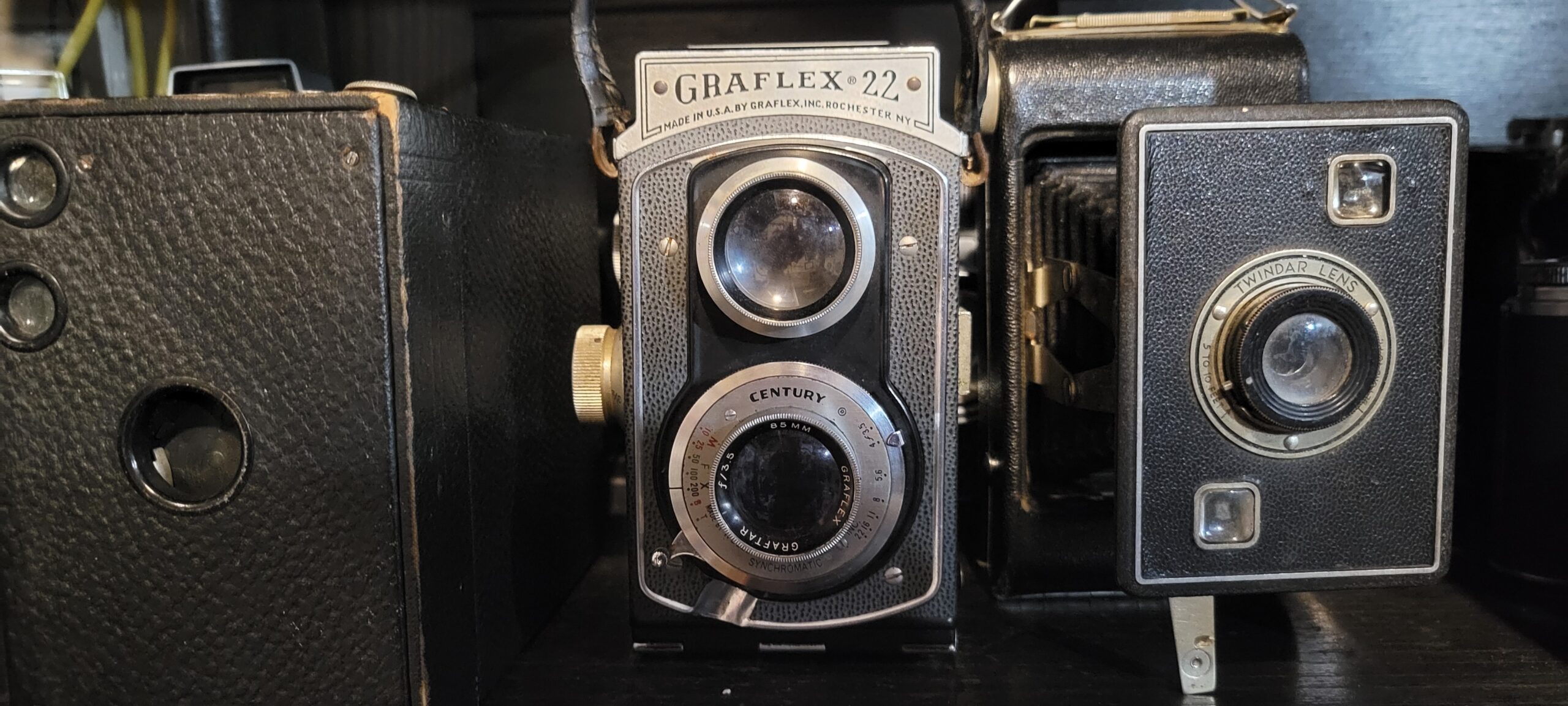
The Graflex 22 camera was produced by Graflex Inc. from 1953 to 1965, and it was one of the most popular medium format cameras of its time. The Graflex 22 used 120 or 220 roll film and had a fixed lens with a leaf shutter. It also had a waist-level viewfinder and a flash sync socket.
The Graflex 22 was designed to be simple and easy to use, but it also offered some features that made it stand out from other cameras in its class. For example, it had a film advance knob that also cocked the shutter, so you didn’t have to wind the film and then press a separate button to take a picture. It also had a double exposure prevention mechanism that locked the shutter until you advanced the film. The Graflex 22 also had a self-timer that could be set for up to 10 seconds.
The Graflex 22 was available in two models: the Standard and the Deluxe. The Standard model had a fixed focus lens with an aperture range of f/8 to f/32 and a shutter speed range of 1/25 to 1/200 seconds. The Deluxe model had a focusing lens with an aperture range of f/4.5 to f/32 and a shutter speed range of 1/10 to 1/300 seconds. The Deluxe model also had a built-in exposure meter that could be coupled with the aperture and shutter settings.
The Graflex 22 was a versatile and reliable camera that could produce sharp and detailed images on medium format film. It was also relatively compact and lightweight for its size, making it easy to carry around and shoot with. The Graflex 22 was popular among amateur and professional photographers alike, and it was used for various types of photography, such as portraits, landscapes, street scenes, and even journalism.
Using the camera takes some getting used to. Modern cameras have an eye level view finder that is peered through to get an approximation of what will be in the frame. The waist-level viewfinder of the Graflex means that you are looking down at the camera while framing the subject. Due to the use of mirrors, the image in the viewfinder is also reversed, and tilting the camera one way will seem to tilt it the other.
The camera is a twin lens reflex camera, which means that you will see an approximation of what the film will see, through the viewfinder. It’s an approximation because there are two lenses – one which supplies the image to the viewfinder, and a second which contains the shutter for the film. The difference is negligible, but can be noticeable on closeups. The twin lens reflex system does offer the advantage of being able to visualise what is in focus and what is not.
The shutter release is really in an add spot, on the lower right portion of the lens. It is a lever, not a button, and definitely takes some getting used to. I have found that using my right hand ring finger is the correct finger to release the shutter with.











